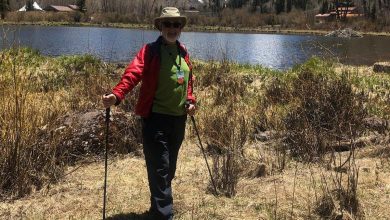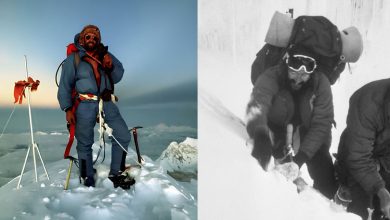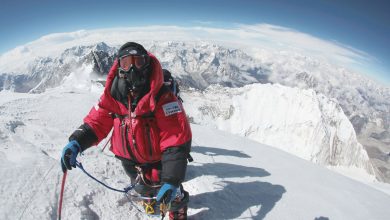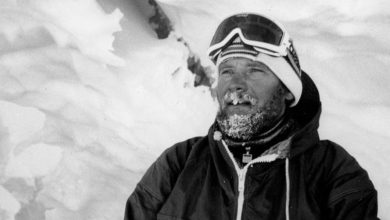Sandy Irvine: British Mountaineer On 1924 Everest Expedition
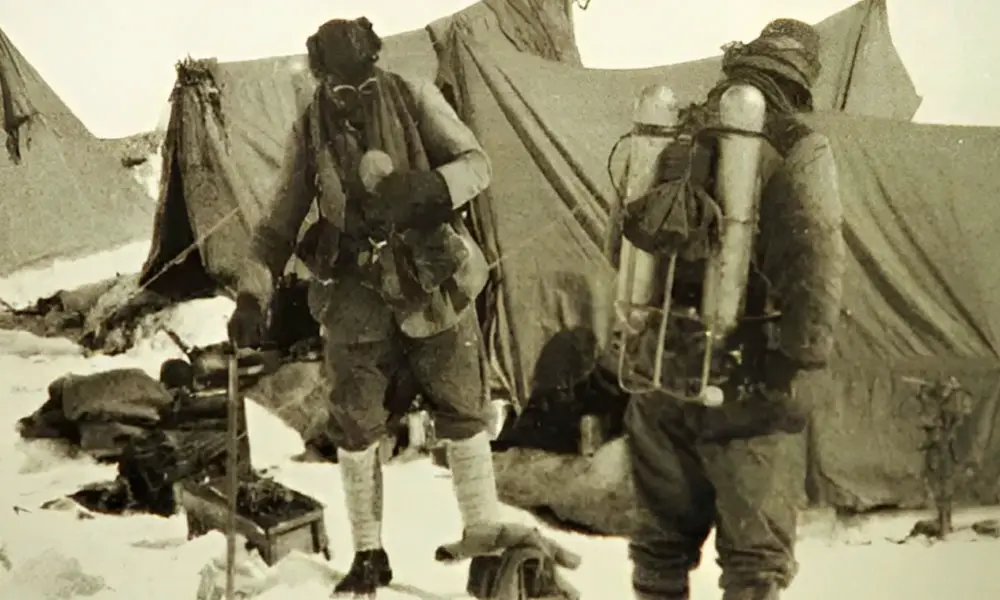
Andrew Comyn “Sandy” Irvine, or Sandy Irvine, was an English mountaineer. He was a part of the third British expedition to Mount Everest that took place in the year 1924. The disappearance of Irvine on the highest peak of the world remains a mystery to the world even to this day. The mountaineer, along with a friend, was seen from a distance on Everest before both of them disappeared. The duo perished in the mountain. While George Mallory, the mountaineer accompanied by Sandy, was found much later in 1999 after being lost, Irvine and his camera were never found.
Sandy Irvine’s first attempt at ascending Mount Everest was also his last time alive, possibly one of the most unfortunate events in the history of Mount climbing. Irvine led a very interesting life, though. It has been a century since he died, but his name is famous among mountaineers and anyone enthusiastic about the mountains.
If you want to know more about Sandy Irvine, keep reading till the end of this article!
Sandy Irvine Mount Everest
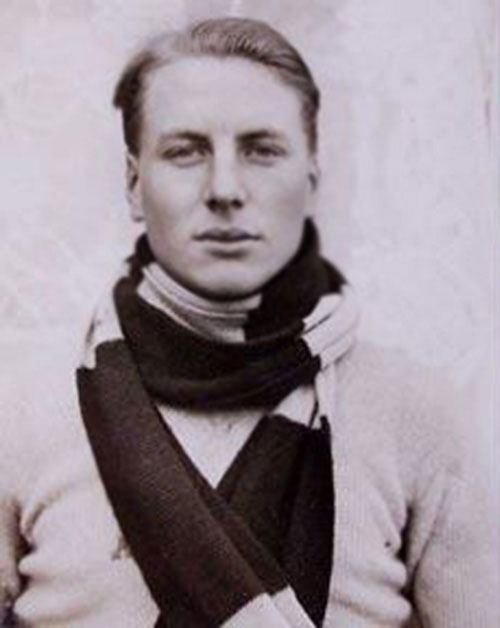
Sandy Irvine is also known as “the lost body in Everest.” His mysterious disappearance has been a topic of concern for everyone who got to know about him. There is no evidence of where he went or how he died in one of the most dangerous places in the world. Irvine was only 23 years old when he was lost in the mountain. While his courage to climb Everest at such a young age is admirable, his name was overshadowed by that of his company Mallory which had already been much famous and popular among the public at that time.
The 1924 British Mount Everest expedition is still one of the most popular and heartbreaking expeditions of all time in Mount Climbing since it was the event where two lives were lost.
The British expedition had already been unsuccessfully attempted a time before the one in 1924. However, this time, the much experienced veteran mountaineer George Mallory was adamant about climbing the mountain as he thought he was too feeble and old to summit Everest. On top of that, he chose to accompany the young and inexperienced engineering student, Andrew, known as Sandy among his friends. It has been assumed that Sandy, with his expertise in supplemental oxygens, showed an upside in taking him along and urged George to choose him over Noell Odell, who was far more experienced.
Along with the trustworthy expertise and knowledge of the 23-year-old engineering student in oxygen equipment, the British team headed to summit Everest. Noel Odell shared that they saw Mallory and Irvine head to the summit at a much faster rate through a distance. Sadly, this was also the last time they were spotted together from a distance.
Odell recalled, “At 12.50, just after I had emerged from a state of jubilation at finding the first definite fossils on Everest, there was a sudden clearing of the atmosphere, and the entire summit ridge and final peak of Everest were unveiled. My eyes became fixed on one tiny black spot silhouetted on a small snow-crest beneath a rock step in the ridge; the black spot moved. Another black spot became apparent and moved up the snow to join the other on the crest. The first then approached the great rock step and shortly emerged at the top; the second did likewise. Then the whole fascinating vision vanished, enveloped in cloud once more.”
While a lot of years have passed since the expedition, there are lots of mysterious questions yet to be answered about Sandy Irvine. Did he ascend Mount Everest and succeed in reaching the top, or did he perish without succeeding to summit the peak? It is also a matter of curiosity as to where Odell and his team spotted the duo and whether or not they were in the upper parts of Mount Everest.
Sandy Irvine’s Personal Life
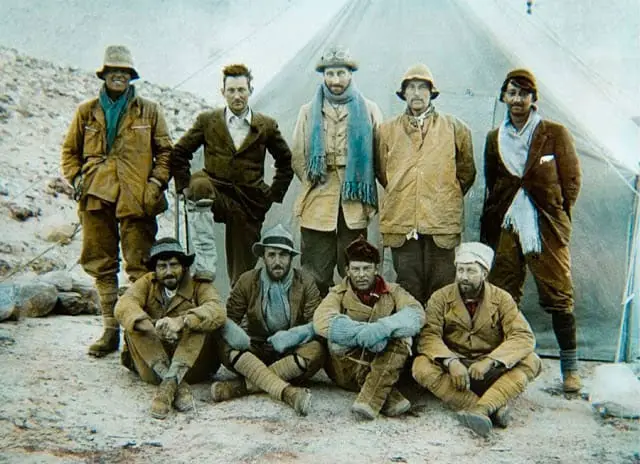
Sandy Irvine was born to historian William Fergusson Irvine (1869–1962) and Lilian Davies-Colley (1870–1950) on 8 April 1902 in Birkenhead, Cheshire. He also has some family connections with physician Eleanor Davies Colley, political activist Harriet Shaw Weaver, and Lyn Irvine, a journalist and writer.
He completed his schooling at Birkenhead School and Shrewsbury School. He showed excellent skills in engineering during his time in the school. Hence, this led him to pursue a career in engineering. During the First World War, he shocked everyone in the war office by designing a synchronization gear that would fire from an airplane using a propeller that passes past the propeller without harming the blades. He also designed an airplane gyroscopic stabilizer.
He was also an excellent rower. This led to him becoming popular in the 1919 ‘Peace Regatta’ at Henley with the Royal Shrewsbury School Boat Club. He later joined Oxford University to study engineering. He joined the Oxford Mountaineering Club as well as the Oxford and Cambridge Boat Race. He joined in 1922 and became a member of the winning crew, which was also the only winning crew between the years 1913 to 1937 from Oxford.
One of the most interesting and controversial parts of Irvine’s life is his love affair with Henry Hall Summers’s wife. Summers was a steel magnate who married a former chorus girl named Marjory Agnes Standish Summers (née Thompson), 33 years younger than him. Henry was also the son of the famous founder John Summers of John Summers & Sons, a steel company. Sandy was in Everest when divorce proceedings between the couple started.
Sandy Irvine Body on Mount Everest
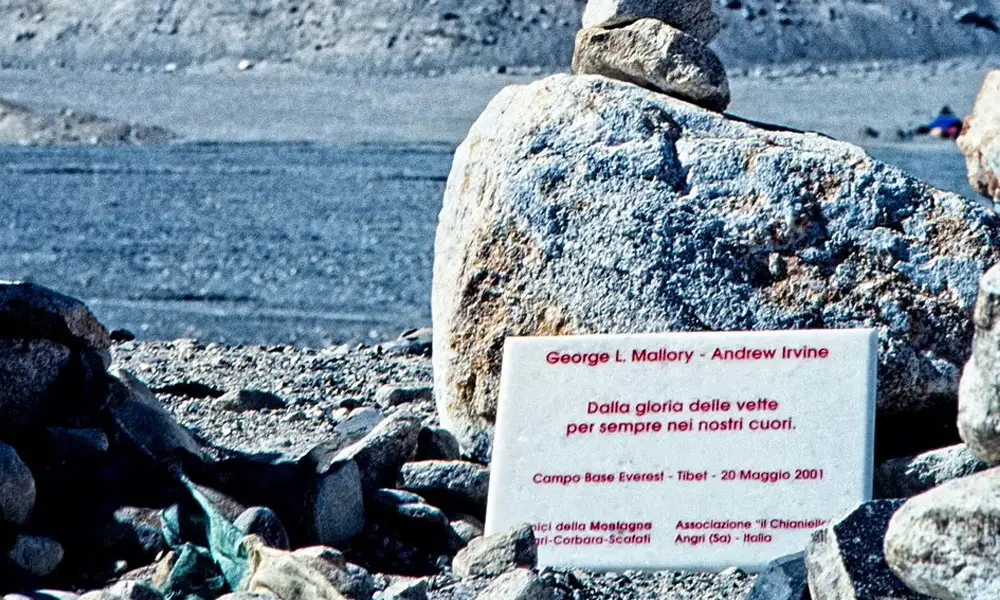
Sandy Irvine is still a matter of mystery in the world. No one has found his body yet. While a group of mountaineers had found the body of George, who accompanied Sandy on their way up to the summit, in 1999, Irvine has still not been found.
Whatsoever, there have been traces and evidence of Irvine on Everest. Nine years after the disappearance of Sandy and George, an axe from the 1924 expedition was found on the higher ridge of Everest in 1933 by Percy Wyn-Harris, a fourth British Everest Expedition member. This was evidence of the lost pair having been there. The axe was around 230 meters (750 feet) before the First Step, at a height of 8,460 meters (27,760 feet), roughly 20 meters (66 feet) below the crest. It was lying on the brown ‘boiler-plate’ rock slabs.
The placement of the axe when it was found kind of signaled that whoever was carrying the axe fell from the icy ridge, which may also have been the cause of their death. Again in 1963, a military swagger stick with the recognizable triple nick mark was found that proved that it was one of the lost possessions of Sandy Irvine.
On May 1991, an oxygen cylinder was found at approximately 8,480 meters (27,820 feet), which is 20 meters (66 feet) higher and 200 feet near to the First Step than the ice axe uncovered in 1933. The oxygen cylinder had been from the 1924 expedition. Hence, this also worked as a mark as to how far the mountaineers may have reached Everest. This cylinder was soon recovered in May 1999.
Possible sightings of Sandy Irvine
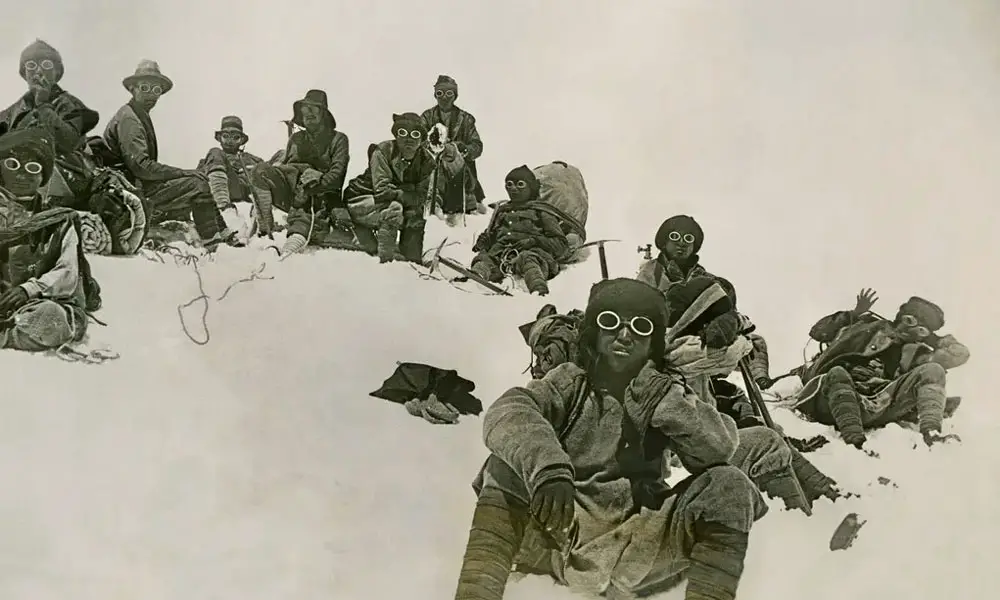
Though the evidence is both strong and weak regarding the possible sightings of Sandy Irvine after 1924, he still has remained a mystery. There have been many mountaineers who had proof of seeing Sandy Irvine after he succumbed at the peak. Wang Hong Bao, from the 1975 Chinese Everest Expedition, claims that he saw an “English dead” at 8,100 meters (26,600 ft). The corpse was lying on a rock like he was sleeping. The body’s appearance had shown signs of being a British man whose cheeks were already poking out. Before more evidence could be collected, Wang perished in an avalanche the next day he opened up.
Wang’s tentmate from the 1975 trip, Zhang Junyan, and American Everest historian Tom Holzel further confirmed Irvine’s sightings in 1986. Wang had claimed to have seen an English man with old-fashioned clothing and gears a day before he died. Since there had been no deaths on the north side of Everest, the information worked like justified proof of the body having the possibility of being Irvine.
From the description given by Wang in 1975, there are at least two possibilities. He may have seen the body of Irvine, or he may have found the body of George, whose body, when found later, had similar resemblances of scar to what Wang had described earlier. Since Wang passed soon after uncovering the truth, there can never be confirmation of who was found. In 2001, however, mountaineers found a body with George Mallory’s name on his clothing. It was a shocking yet legendary discovery from their side. The extensive discovery was made in the same place where Wang claimed to have found a body. Most of Mallory’s body had perished due to the passage of years. His daughter said that he always kept a picture of his family in his pocket.
Any such photos were not found, though. Snow goggles were discovered in the clothes he was wearing. Likewise, it has been said that George may have buried the picture of his family somewhere in the snow as a sign of having summited the mountain.
Also, read:
